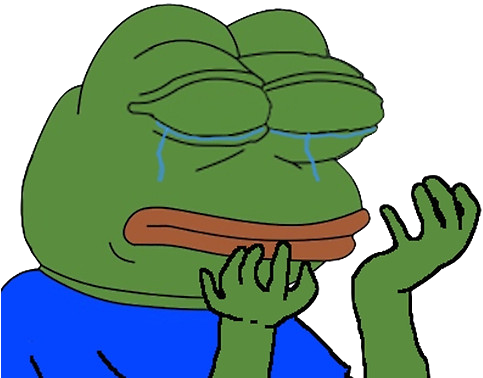COMP3010: Algorithm Theory and Design
Daniel Sutantyo, Department of Computing, Macquarie University
6.2 - Substitution Method
Substitution Method
6.2 - Substitution Method
- It's another method for solving recurrences to find the time complexity of an algorithm
- It's done using induction
- we need to guess the solution, and then prove that it is correct
- what can we use to make this guess?
- recursive-tree method
- Why?
- since sometimes we may not be able to draw the recursion tree nicely
- in case we don't have to be that exact (\(\Omega, O\))
- notice that with the recursion-tree method, we're often counting the exact number of operation (differs by constant), i.e. \(\Theta(g(n))\)
Substitution Method
- What it is not:
- you won't be substituting in things
- \(T(n) = 2T(n/2) + n\)
- \(=2(2T(n/4) + n/2) + n\)
- \(=2(2(2T(n/8)+n/4)+n/2+n\)
- ... (some magic)
- \(= n\log n\)
- If you get asked to prove something using the substitution method, then you need to use induction
6.2 - Substitution Method
Substitution Method
- There are only two steps:
- guess the time complexity of the algorithm
- use induction to find the constants and show that the time complexity we guessed is correct
6.2 - Substitution Method
Mergesort
\(T(n) = \begin{cases} \Theta(1) &\text{if $n = 1$}\\ 2T(n/2) + cn &\text{if $n > 1$} \end{cases}\)
- Step 1: Guess the time complexity
- draw the recursion tree and estimate the number of operations
- try different bounds and see which one works (e.g. try \(n^2\), then \(n\), then \(n \log n\))
- heuristic or experience (is there another algorithm that is similar?)
- use the master theorem (next lecture)
- For mergesort, let's guess
- \(T(n) = O(n \log n)\) (let's use log based 2)
6.2 - Substitution Method
Mergesort
- Step 2: Use induction to show that mergesort is \(O(n \log_2 n)\)
- Prove \(T(n) = O(n\log n)\) by induction
- i.e. prove there exists \(c > 0\) and \(n_0 > 0\) such that \(T(n) \le cn\log n\) for all \(n > n_0\)
- start with the base case
-
Base case: \(n = 1\)
- LHS: \(T(1) = 1\)
- RHS: \(cn\log n = c * \log 1 = 0\)
\(T(n) = \begin{cases} 1 &\text{if $n = 1$}\\ 2T(n/2) + cn &\text{if $n > 1$} \end{cases}\)

6.2 - Substitution Method
Mergesort
- we don't have to start from 1!
-
Base case:
- \(n = 2\)
- LHS: \(T(2) = 2*T(1)+2 = 4\)
- RHS: \(cn\log n =2c * \log 2\)
-
\(n = 3\)
- LHS: \(T(3) = 2*T(1)+3 = 5\)
- RHS: \(cn\log n =3c * \log 3\)
- \(n = 2\)
6.2 - Substitution Method
\(T(n) = \begin{cases} 1 &\text{if $n = 1$}\\ 2T(n/2) + cn &\text{if $n > 1$} \end{cases}\)
Mergesort
- \(n = 4\)
- LHS: \(T(4) = 2*T(2)+4 = 12\)
- RHS: \(cn\log n =4c * \log 4\)
-
\(n = 5\)
- LHS: \(T(5) = 2*T(2)+5 = 13\)
- RHS: \(cn\log n =5c * \log 5\)
-
\(n = 6\)
- LHS: \(T(6) = 2*T(3)+6 = 16\)
- RHS: \(cn\log n =6c * \log 6\)
6.2 - Substitution Method
once you got to \(n = 4\) onward, you don't need to depend on \(T(1)\) anymore
\(T(n) = \begin{cases} 1 &\text{if $n = 1$}\\ 2T(n/2) + cn &\text{if $n > 1$} \end{cases}\)
Mergesort
- Base case:
-
- \(n = 2\)
- LHS: \(T(2) = 2*T(1)+2 = 4\)
- RHS: \(cn\log n =2c * \log 2\)
-
\(n = 3\)
- LHS: \(T(3) = 2*T(1)+3 = 5\)
- RHS: \(cn\log n =3c * \log 3\)
- true for \(c \ge 2\)
- \(n = 2\)
6.2 - Substitution Method
\(T(n) = \begin{cases} 1 &\text{if $n = 1$}\\ 2T(n/2) + cn &\text{if $n > 1$} \end{cases}\)
Mergesort
- Prove \(T(n) \le cn\log n\) for all \(n > n_0\) for some \(c > 0\) and \(n_0 > 0\)
-
Induction step:
- Induction hypothesis: assume \(T(k) \le ck\log k\) for some \(k > 1\)
- Prove: \(T(2k)\le 2ck\log 2k\)
\(T(2k) = 2*T(k) + 2ck\)
\(\le 2ck\log k + 2ck\)
(from the recurrence)
(from the induction hypothesis)
\(\le 2ck\log 2k + 2ck\)

6.2 - Substitution Method
\(T(n) = \begin{cases} 1 &\text{if $n = 1$}\\ 2T(n/2) + cn &\text{if $n > 1$} \end{cases}\)
Mergesort
- we want to prove that
- \(T(2k) \le 2ck\log{2k}\)
- but what we can prove is
- \(T(2k) \le 2ck \log 2k + 2ck\)
- these are not the same, because it could be the case that
- \(2ck\log 2k \le T(2k) \le 2ck\log 2k + 2ck\)
- the problem is the positive term \(2ck\)
6.2 - Substitution Method
\(T(n) = \begin{cases} 1 &\text{if $n = 1$}\\ 2T(n/2) + cn &\text{if $n > 1$} \end{cases}\)
Mergesort
- Prove \(T(n) \le cn\log n\) for all \(n > n_0\) for some \(c > 0\) and \(n_0 > 0\)
-
Induction step:
- Induction hypothesis: assume \(T(\frac{k}{2}) \le \frac{ck}{2}\log\frac{k}{2}\) for some \(k > 1\)
- Prove: \(T(k)\le ck\log k\)
\(T(k) = 2*T(\frac{k}{2}) + ck\)
\(\le ck\log \frac{k}{2} + ck\)
(from the recurrence)
(from the induction hypothesis)
\(= ck\log k - ck\log2 + ck = ck\log k\)
6.2 - Substitution Method
(since we're using log base 2)
\(T(n) = \begin{cases} 1 &\text{if $n = 1$}\\ 2T(n/2) + cn &\text{if $n > 1$} \end{cases}\)
Linear Search
\(T(n) = \begin{cases} 1 &\text{if $n \le 2$}\\3T(n/3) + 2 &\text{if $n > 2$} \end{cases}\)
6.2 - Substitution Method
- Use induction to show that linear search is \(O(n)\)
- Prove \(T(n) = O(n)\) by induction
- i.e. prove there exists \(c > 0\) and \(n_0 > 0\) such that \(T(n) \le cn\) for all \(n > n_0\)
- start with the base case
-
Base case: \(n = 1\)
- LHS: \(T(1) = 1\)
- RHS: \(cn = c * 1 = 1\)
Linear Search
6.2 - Substitution Method
- \(n = 2\)
- LHS: \(T(2) = 1\)
- RHS: \(cn = 2c\)
-
\(n = 3\)
- LHS: \(3*1 + 2 = 5\)
- RHS: \(cn= 3c\)
-
\(n = 4\)
- LHS: \(3*1 + 2 = 5\)
- RHS: \(cn=4c\)
\(T(n) = \begin{cases} 1 &\text{if $n \le 2$}\\3T(n/3) + 2 &\text{if $n > 2$} \end{cases}\)
Linear Search
6.2 - Substitution Method
\(T(n) = \begin{cases} 1 &\text{if $n \le 2$}\\3T(n/3) + 2 &\text{if $n > 2$} \end{cases}\)
- Prove \(T(n) \le cn\) for all \(n > n_0\) for some \(c > 0\) and \(n_0 > 0\)
-
Induction step:
- Induction hypothesis: assume \(T(k/3) \le ck/3\) for some \(k > 1\)
- Prove: \(T(k)\le ck\)
\(T(k) = 3T(k/3) + 2\)
\(\le ck + 2\)
(from the recurrence)
(from the induction hypothesis)
can we say \(T(k) \le ck\) ?
\(= ck + 2\)
Linear Search
6.2 - Substitution Method
\(T(n) = \begin{cases} 1 &\text{if $n \le 2$}\\3T(n/3) + 2 &\text{if $n > 2$} \end{cases}\)
- So let's try to prove the STRONGER bound
-
Induction step:
- Induction hypothesis: assume \(T(k/3) \le ck/3-d\) for some \(k > 1\)
- Prove: \(T(k)\le ck - d\)
\(T(k) = 3T(k/3) + 2\)
\(\le 3(ck/3 - d) + 2\)
(from the recurrence)
(from the induction hypothesis)
can we say \(T(k) \le ck - d\) now? Yes, for \(d \ge 1\)
\(= ck -3d + 2\)
so \(T(n) \le cn - 1\), hence \(T(n)= O(n)\)
- Prove \(T(n) \le cn-d\) for all \(n > n_0\) for some \(c > 0\), \(d > 0\) and \(n_0 > 0\)
Subtleties
6.2 - Substitution Method
\(T(n) = \begin{cases} 1 &\text{if $n \le 2$}\\3T(n/3) + 2 &\text{if $n > 2$} \end{cases}\)
- Try proving a weaker bound instead (e.g. \(T(n) \le cn - d\))
- Try changing the induction hypothesis (e.g. from \(2k \rightarrow k\) to \(k \rightarrow k/2\))
- Showing that \(T(n) \le cn + 1\) does not prove that \(T(n) \le cn\)
\(T(n) = \begin{cases} 1 &\text{if $n = 1$}\\ 2T(n/2) + cn &\text{if $n > 1$} \end{cases}\)
Another example
\(T(n) = \begin{cases} 1 &\text{if $n \le 3$}\\3T({n/4}) + n^2 &\text{if $n > 3$} \end{cases}\)
6.2 - Substitution Method
- Guess the complexity: \(O(n^2)\)
- Prove \(T(n) = O(n^2)\) by induction
- i.e. prove there exists \(c > 0\) and \(n_0 > 0\) such that \(T(n) \le cn^2\) for all \(n > n_0\)
- start with the base case
-
Base case: \(n = 1\) (and also \(n=2, 3\))
- LHS: \(T(1) = 1\)
- RHS: \(cn^2 = c * 1 = 1\)
Another example
6.2 - Substitution Method
- \(n = 4\)
- LHS: \(3 * 1 + 16 = 19\)
- RHS: \(cn^2 = c * 16\)
-
\(n = 8\)
- LHS: \(3*7 + 64 = 81\)
- RHS: \(cn^2 = c * 64\)
-
\(n = 16\)
- LHS: \(3*81 + 256 = 499 \)
- RHS: \(cn^2=c * 256\)
\(T(n) = \begin{cases} 1 &\text{if $n \le 3$}\\3T({n/4}) + n^2 &\text{if $n > 3$} \end{cases}\)
Another example
6.2 - Substitution Method
-
Induction step:
- Induction hypothesis: assume \(T(\frac{k}{4}) \le c\left(\frac{k}{4}\right)^2\) for some \(k > 1\)
- Prove: \(T(k)\le ck^2\)
\(T(k) = 3T(\frac{k}{4}) + k^2\)
\(\le 3ck^2/16 + k^2\)
(from the recurrence)
(from the induction hypothesis)
\(= (3c/16+1)k^2\)
\(T(n) = \begin{cases} 1 &\text{if $n \le 3$}\\3T({n/4}) + n^2 &\text{if $n > 3$} \end{cases}\)
Therefore \(T(k) \le c k^2\) with \(c = 2\) since \(3c/16+1 < 2\), hence \(T(k) = O(k^2)\)
Summary
6.2 - Substitution Method
- Another proof by induction
- The result is not as precise as the recursion-tree method
- we normally use induction to show upper/lower bound (i.e \(O\) or \(\Omega\), not tight bound (i.e. \(\Theta\))
- The kind of question you may expect:
- use the recursion-tree method to guess the complexity of an algorithm
- use induction to prove that this is correct
COMP3010 - 6.2 - Substitution Method
By Daniel Sutantyo
COMP3010 - 6.2 - Substitution Method
Substitution method for finding the running time of a divide and conquer algorithm
- 296



